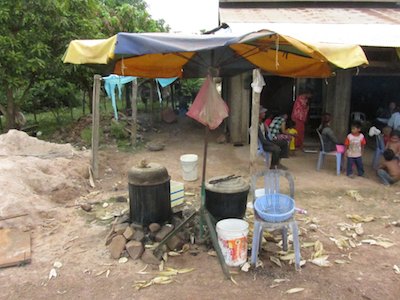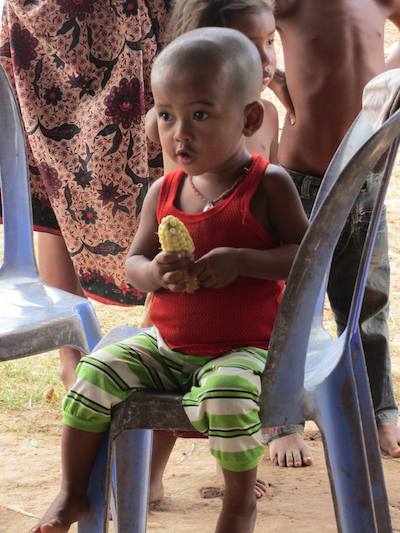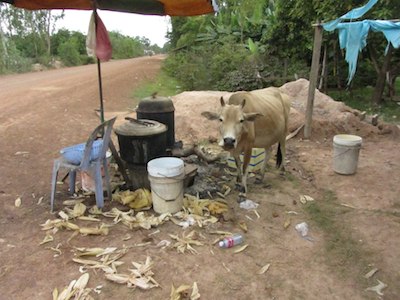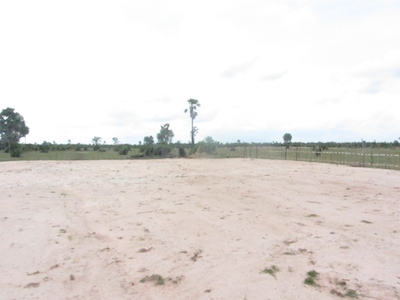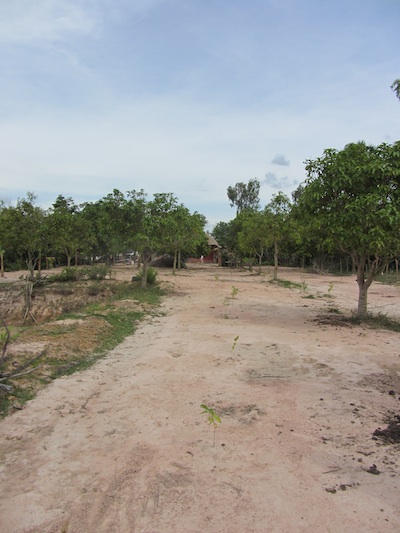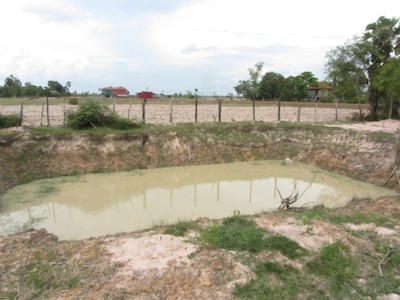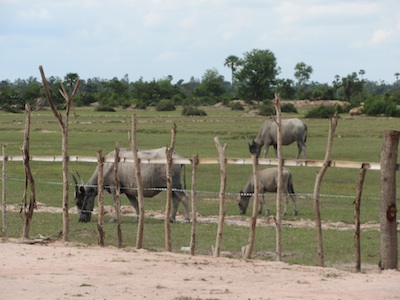My apologies for not posting over the past few days. The posts I’ve planned for the next week take longer to write as they involve some research.
Anyways, to recap: I’ve discussed how we picked the households for FoF and what it’s like to be out in the field. I’ve also briefly mentioned what the purpose of our project is: to improve household food security and the nutritional status of women and children in rural Cambodia by combining HFP and aquaculture (it says so on the site’s banner). The word baseline keeps popping up – in post titles, categories, my writing. But what IS baseline? What are we trying to measure, and how are we measuring it? These are the questions I’ll be answering in my next few posts.
All 900 houses are completing a one-hour survey during baseline. The enumerators have a set of questions they work through, as well as a guide that explains how to record answers. When all of the questions have been answers, the women and any of their children under the age of 5 make their way to the anthropometry station to be measured and pricked. This process will be repeated after the intervention (ie after the farms and fish ponds have been established) during what is called the endline survey.
Half of the women are also completing 24-hour recalls and providing blood samples. I’ll discuss this another day.
Going back to the survey – what are we asking the women? What information do we hope to obtain from their answers?
The survey is divided into 8 modules: Household Information, Water and Sanitation, Homestead Food Production (subcategory: animal raising), Food Consumption, Mother’s Nutrition and Health, Knowledge and Attitudes, Household Food Security, and Measurements and Hemoglobin. The first 7 modules contain questions asked during the interview, and the last module is filled in by the enumerators trained in anthropometry and hemoglobin analysis.
Module 1: Household information
Here we try to ascertain the main characteristics of the household. We want to know how many people live in the house, the highest level of education obtained by the mother and father, annual income, who makes decisions about income, health care, and other important issues (mother, father, both?), what material goods the house has, and what materials the house is made out of. These questions provide a detailed picture of the family’s socioeconomic status.
Module 2: Water and Sanitation
We want to learn about the family’s hygiene (how often they use soap, where they go to the bathroom), and whether or not they have decent access to clean water.
Module 3: Homestead Food Production
We are trying to establish what kind of food, if any, people grow for their own use and to sell. This includes gardens, fishponds, and animal raising. This helps us gain insight into a variety of things, such as what food is available in a household, how familiar people are with HFP and aquaculture, what kind of income they make.
Module 4: Food Consumption
The most direct way of assessing nutritional status. We want to know what people eat, and how often. Because of our interest in aquaculture, we want to get as specific as possible when discussing fish. Therefore we ask people if they consume 10 common species of fish (5 big, 5 small), and we also leave room for any species not on the list. To help with this section, all enumerators carry a fish atlas with them, which has pictures of 36 fish common in Cambodia for easy identification of species consumed. We also want to know what nutrients they are or aren’t getting. Our questions specifically ask about dark, leafy greens (iron), fruit and vegetables with orange insides (vitamin A), grains (carbohydrates), organ meats (iron, protein), animal protein and oil, fat, and butter (dietary fat). Finally, we want to know where their food comes from (home, market, gift).
Module 5: Mother’s Nutrition and Health
The purpose of this section is to look at anemia and pregnancy. We ask if/when women have taken iron tablets, and we write down their current pregnancy status (not pregnant, or pregnant and how many months along they are). We also have a question about night blindness during pregnancy, as night blindness is a strong indicator of vitamin A deficiency.
Module 6: Knowledge and Attitudes – This is where we assess what women know about proper nutrition for themselves and their children. We ask how much they think they should feed their children, when they should introduce solid food, and if they can identify which foods are good sources of certain nutrients such as vitamin A and iron.
Module 7: Household Food Security – The last module in our survey tries to determine how food secure a household is by asking women if they worry about getting enough food for their family, or the right kinds of food, and whether or not they sometimes have to skip meals or eat famine foods (foods that make you feel full but don’t provide a decent amount of nutrients).
Hopefully this provides some insight into the kind of data we are collecting during baseline and why we care about this information. I’m going to try to film videos in the field tomorrow. Between my iPhone, laptop, and camera, I should be able to get some footage. Wish me luck!





